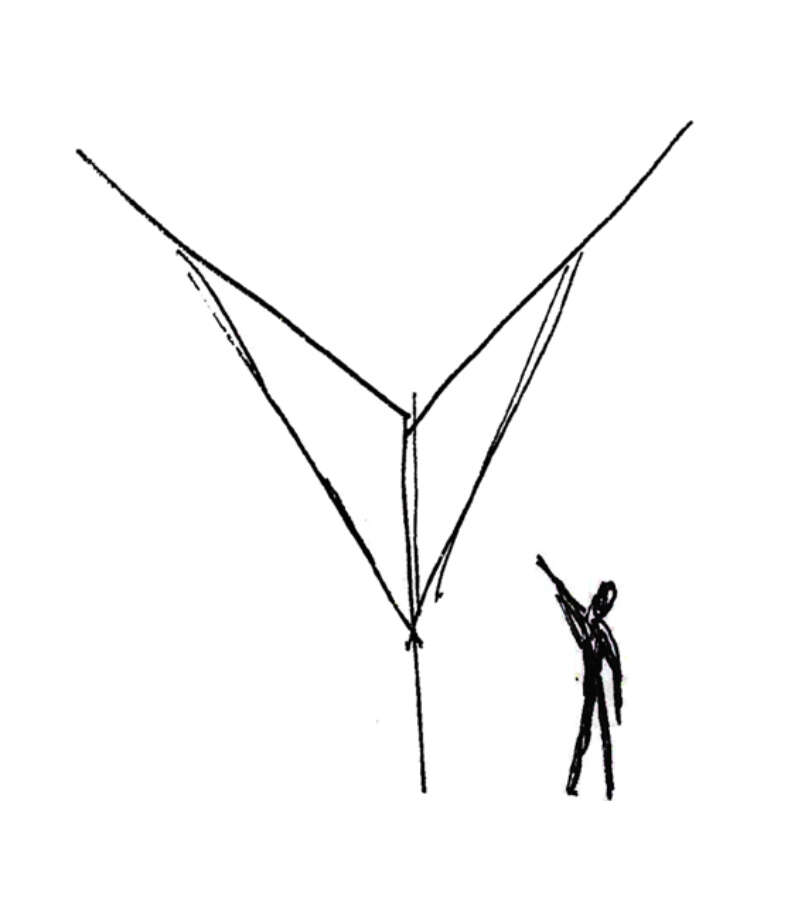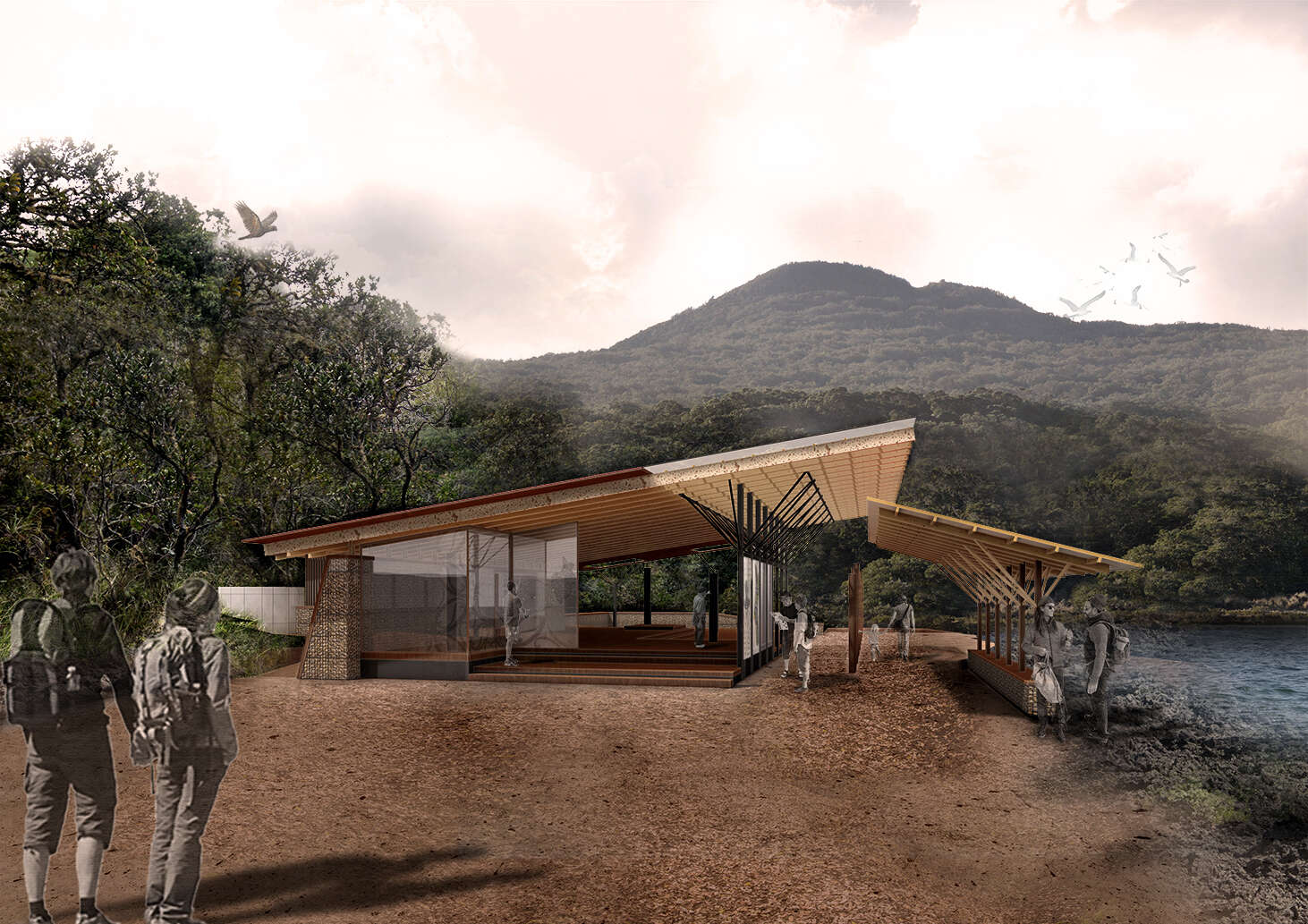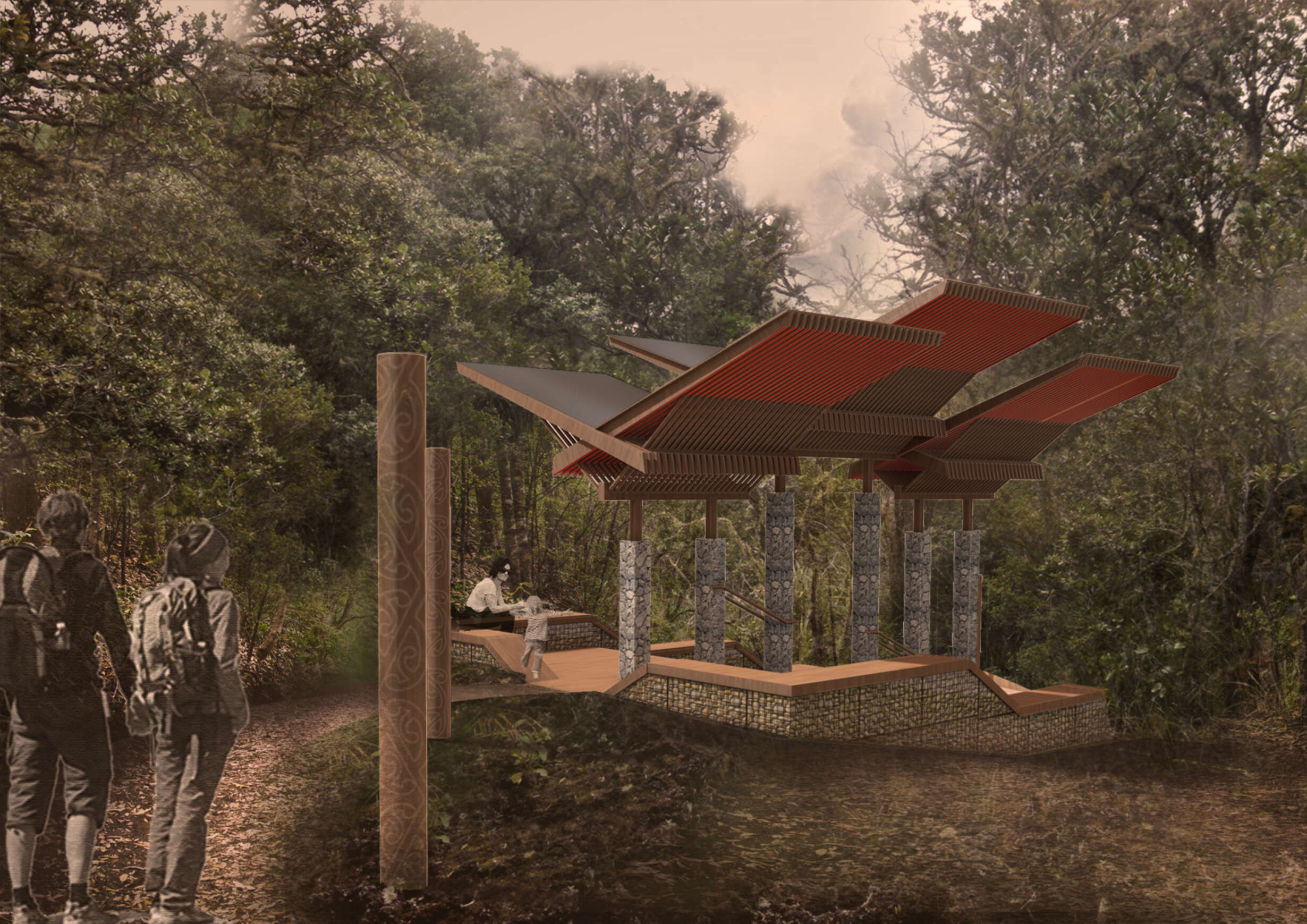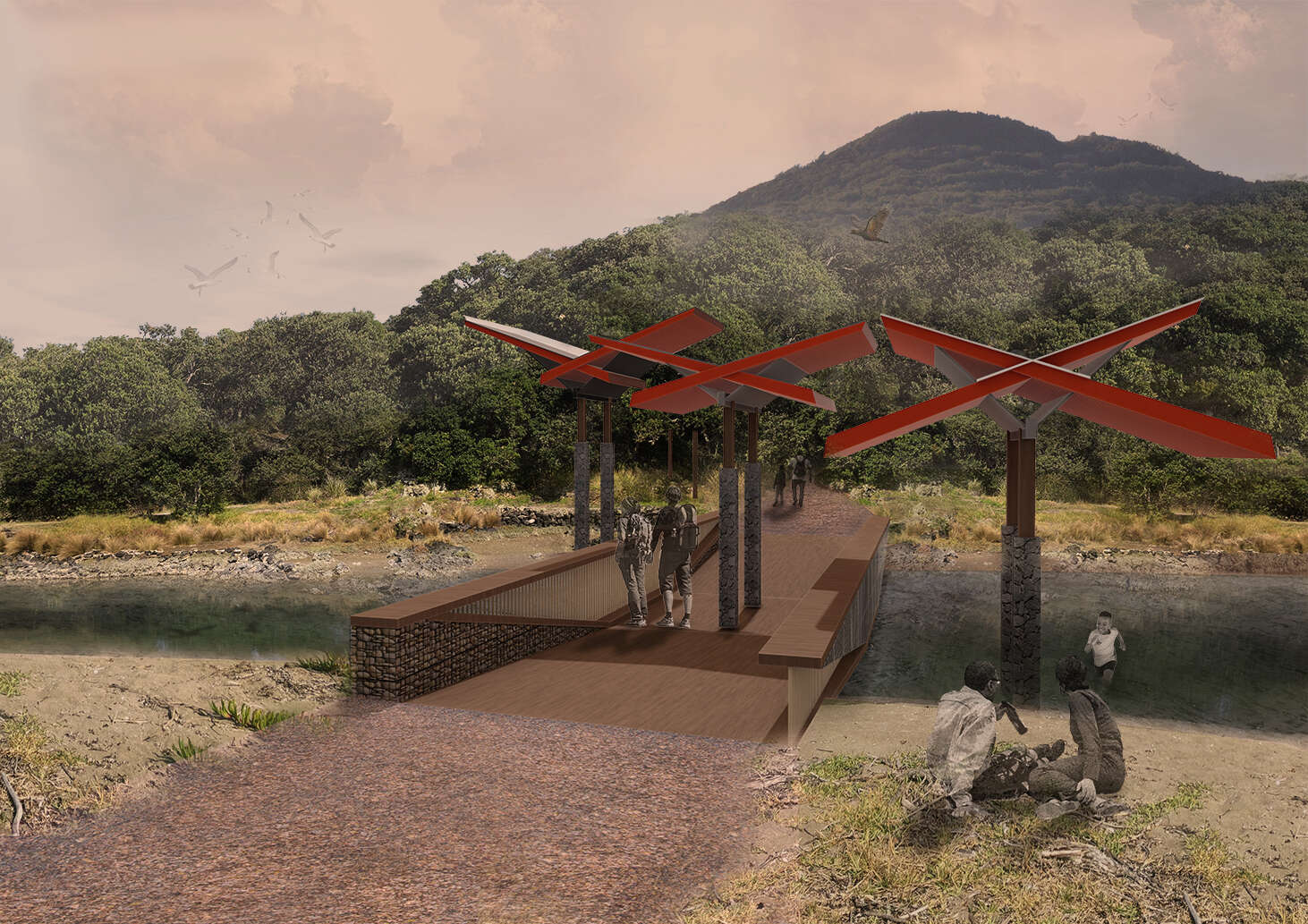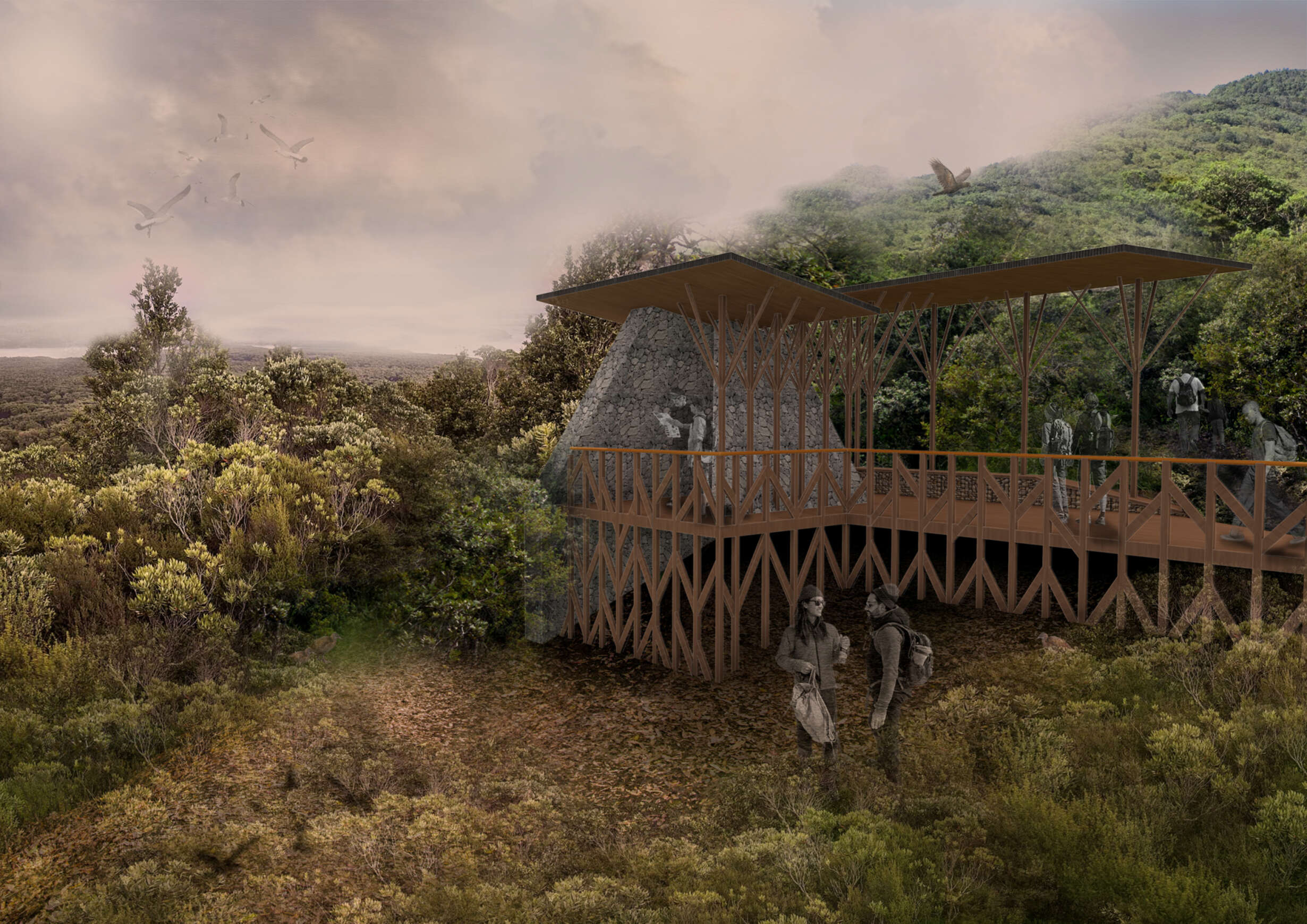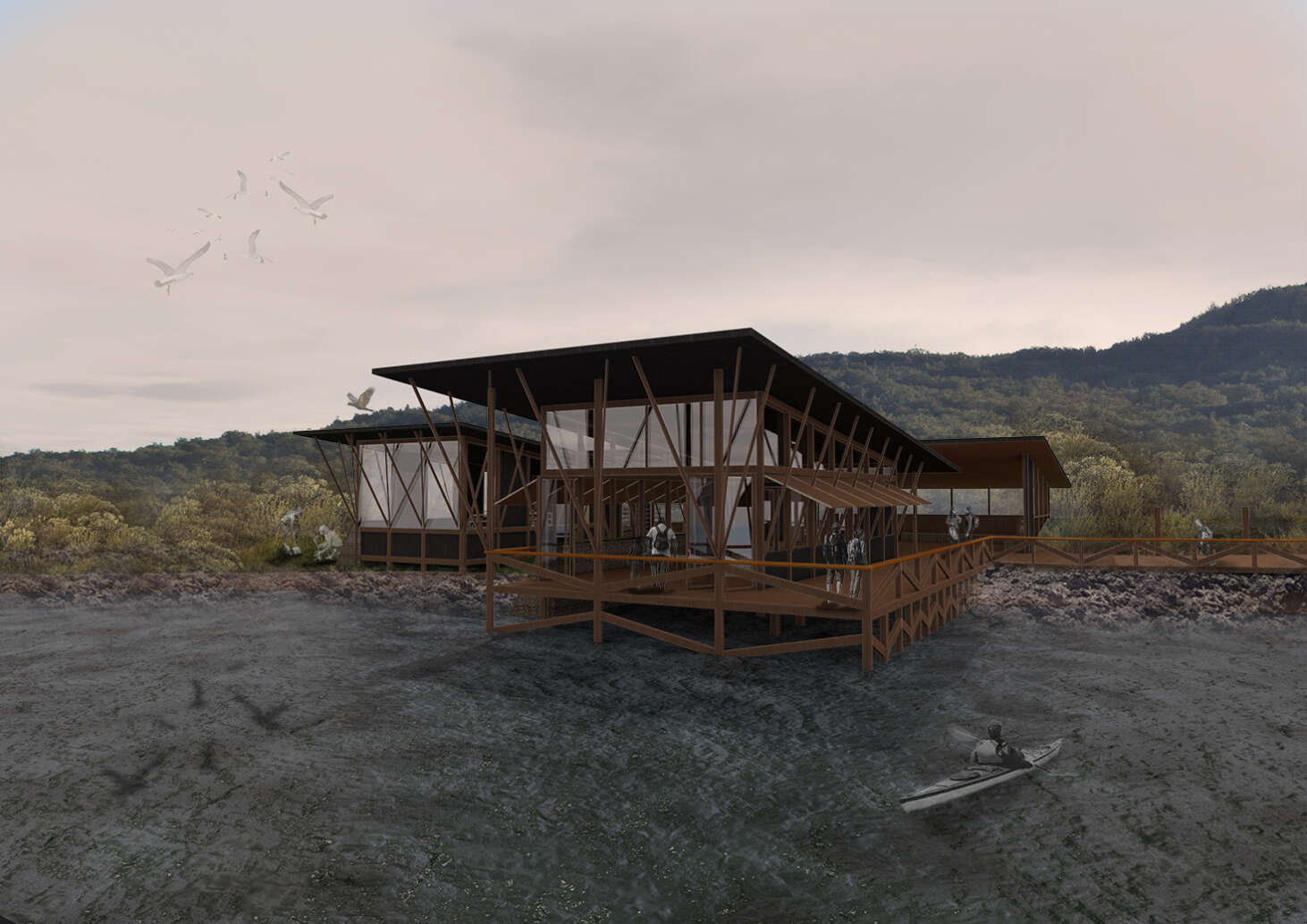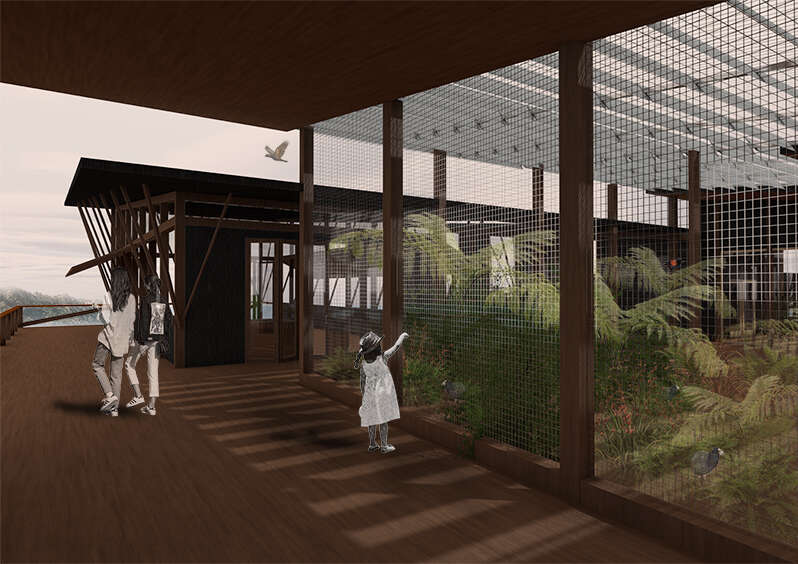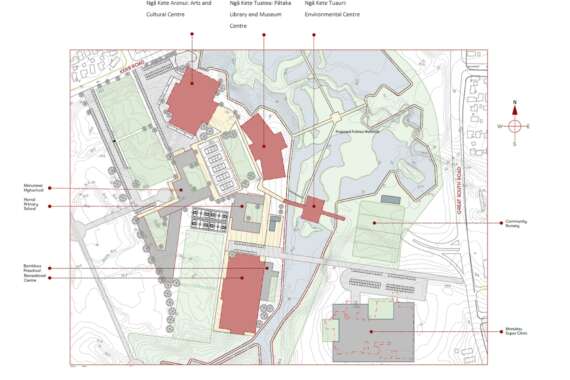Mōhio ki te Whenua/ Understanding the Land

Is architecture able to facilitate the coexistence between cultural and ecological conservation on conservation island estates in the Hauraki Gulf?
New Zealand is known for its strong conservation ethic, and a clear desire to both protect and restore nature in Aotearoa. The country's scenery and native wildlife are admired both nationally and around the world. Yet despite the nation's prominent natural heritage, there is a prevalent attitude that New Zealand lacks a significant cultural heritage. Despite a recent upsurge in the acknowledgement of and engagement with New Zealand's cultural history, it remains overlooked in the presence of ecological conservation.
The New Zealand conservation ethic is ingrained in the way we promote and discuss our country. However by merely prioritising the observation of the landscape, the more profound cultural and ecological significance embedded into the landscape remains unrecognised. As a result, many cultural and historical narratives are discounted.
The thesis research of Mōhio ki te Whenua explores the tension between ecological and cultural heritage within the conservation estate of Rangitoto Island.







